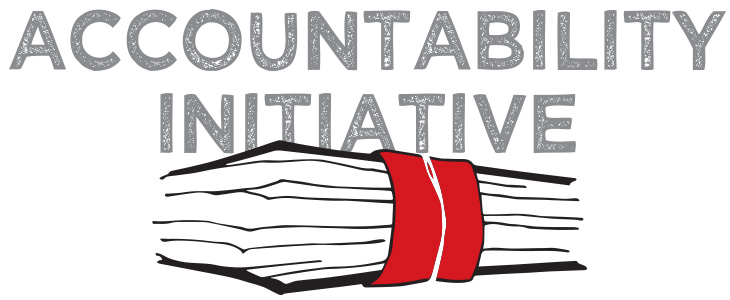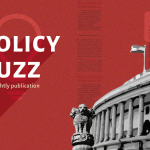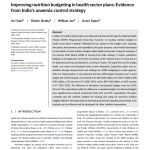
Placing public back in public procurement
27 May 2013
The disproportionate diversion of public funds that have taken public attention by storm, calls for an immediate adoption of preventive measures and strengthening of regulatory foundations. The Parliamentary Standing Committee on Coal recently asked for a screening of the decision making process in the coal block allocation (see their report ‘Review of allotment, development and performance of coal/lignite blocks’ here). With the political and business links in this particular scam becoming more apparent when looking at the layers of individuals involved, as well as more elusive, in terms of its widespread implications, there is a larger, darker cloud that is set above this particular situation- to what extent does our legal system account for a mechanism which allows for concrete preventive action against this type of malfeasance?
In 2011, India ratified a document known as the United Nations Convention against Corruption (UNCAC 2005), joining 160 other countries who aim to address corruption, create awareness and assess national legislations to check compliance with the UNCAC. The UNCAC, as part of its mandate, seeks to create a structure that looks at national level policy frameworks on tackling corruption (on ‘Probity in Public Procurement’ and ‘Incentives to Corporate Integrity’)while also advising governments to create/implement a legal foundation based on international standards. Towards this effort, the ‘Probity in Public Procurement’ (see link here) survey covered areas such as a) the compliance of Indian laws with the UNCAC, specifically under the Public procurement and management of public finances article and b)to analyse current practices & challenges, and means to make (a) stronger.
Looking at the enormous arrangements made for PPP’s[1] across sectors in India by the government (see link), its importance as a type of public procurement has garnered much attention. While existing generic procedures address some elements of procurement behavior, there is no central law yet that regulates this process. This makes it susceptible to inefficiencies and low transparency, thereby leading to (in many cases) unwarranted behaviour from politicians and corporate honchos towards the field and mid management staff. This report looked into the Draft National PPP Policy of 2011, the General Financial Rules 2005, Public Procurement Bill 2012, Draft PPP rules 2011, and the Company Bill 2012. Karnataka, having one of the highest PPP projects as against any other state, as well as being one of the first states to introduce a public procurement legislation (the Karnataka Transparency in Public Procurement – KTPP Act 1999), warranted a look into state level understanding of public procurement as well.
A thorough look into these legislations[2] will show that India, contrary to what many critics claim, actually has well thought-out and reasonably structured legislations regarding public procurement and PPP’s at the state (Karnataka) as well as at the centre. Besides classifying the recognized methods of procurement, the laws create a framework for regulating the process. For example, The Public Procurement Bill 2012, looks at the procuring entity (need, cost of procurement, etc), the pre-qualification process for inviting the bids, identifying reliable bidders, evaluation criteria of the procurement, exclusion & debarring clauses and penalties for offences. The Bill is especially noted for stating sanctions against public and private entities to be regulated for bribe taking and bribe giving.
Despite this, some of the main challenges that can be seen are:
a) Many of these legislations, while well articulated, are still Drafts and are yet to be passed at the centre. This has not only held up the time frame from which they can be implemented, but have also resulted in a lack of planning (keeping legislative norms in mind) when it comes to hundreds of projects currently functioning or those that have occurred in the past.
b)It is not necessary that compliance with laws connect directly with implementation strategies of the central or the state government. It is one thing to build a bridge between the corporate and government but it takes efficient, strong and vigilant ground staff and processes that will allow for enforcement mechanisms to have an impact.
c) Roads, power, infrastructure not only have the most PPP projects and highest value in monetary terms, but are also known to be rent-thick sectors that may be vulnerable to risks in the execution of projects. Performance standards have not yet been set so as to minimize risks within these sectors.
d) Legislations like the Right to Information Act 2005 and the Public Interest Disclosure and Protection of Persons Making the Disclosure Bill 2010 does not recognize private entities that work under PPP’s to be eligible. This makes performance assessments difficult and may lay more responsibility on the public official than the private entity.
e) There is a serious lack of information trickling down the pipe regarding even these Drafts when it comes to establishing protocols under PPP’s. Creating awareness amongst all the levels of officials involved- be it private or public, is crucial.
f) When it comes to the state level processes, very few states have laws in place to look at public procurement or PPP’s. These states are Andhra Pradesh, Maharashtra, Karnataka, Gujarat, UP, Kerala, Tamil Nadu, Sikkim, Rajasthan and Madhya Pradesh. Surprisingly, small or no steps have been taken in the other states, considering that a total of over 700 PPP projects currently are recorded over the country, totaling to about Rs 383,332 crore (state wise breakdown of PPP projects is available here).
The strength of public procurements is laid out in its end form- in the quality of services that are to be provided to the public. It is high time that the public entities keep their eye on the ball, businesses become honest about their responsibilities and not dip their fingers in the honey pot, and finally, for the public to question and track the outcomes of failed and successful public private partnerships. Legislative scrutiny and a strong implementing structure will allow for the above to take place.
[1] To know more on PPP developing and implementation processes, view http://toolkit.pppinindia.com/urban-transport/module1-intro.php?links=intro1
[2] Refer to ‘Probity in Public Procurement’ report Pg 24-33





